The final part of ILM.com’s discussion with Andor‘s overall visual effects producer and production visual effects supervisor covers the influence of Rogue One, collaborating with Tony Gilroy, their favorite moments from season two, and more.
By Mark Newbold
In part one of our conversation, TJ Falls (vice president of visual effects at Lucasfilm and Andor’s visual effects producer) and Mohen Leo (Andor’s production visual effects supervisor) discussed location shooting and the logistics of bringing Andor (2022-25) to audiences worldwide. Now, we continue our dive into the Emmy-nominated second season and the teamwork required to shepherd the story from the page to the screen.
It takes an army to bring a film or TV series from the imagination of the writers to screens around the world, and that means teamwork is key, as Mohen Leo explains.
“This project was somewhat unique in terms of how collaborative people were. You have certain projects where the director’s attitude is, ‘This is what I want, I don’t care how you do it, just figure it out.’ This was a case of everyone collectively understanding that we were trying to get as much value on screen as possible. That meant I could go to [editor] John Gilroy and say, ‘Hey, that choice you made will cost a lot of money; is it really worth it? It doesn’t feel like this is where we want to put all the effort.’ There were specific instances where he would say, ‘Okay, give me some time, I’ll have a look. If there’s a different way to cut this, I’ll let you know.’ Sometimes he came back and said, ‘Yep, I’ve managed to get rid of the shot and it feels just as good.’ That allows us to take those funds and put them elsewhere to make something else bigger and more exciting.”
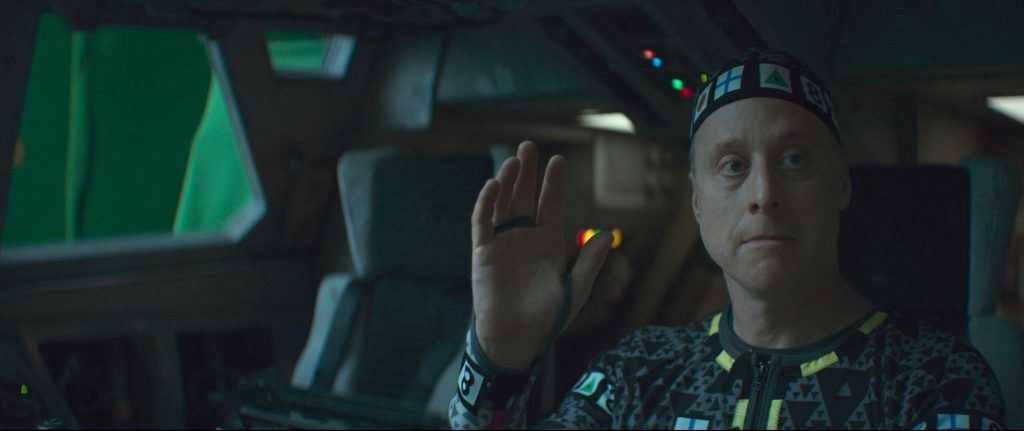
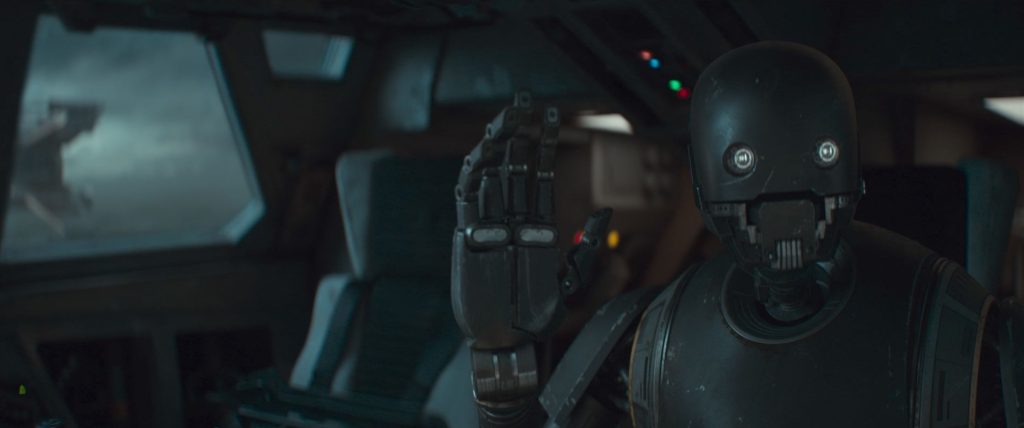
Flexibility, trust, and an understanding of team dynamics meant that the Andor team could make required adjustments and pivot, making the most of the skills at hand and sharing the load across departments, something that started at the very beginning of the series.
“That comes from the partnership we had through season one to season two,” TJ Falls notes. “It was an intentionally designed paradigm between [showrunner] Tony Gilroy and our producer, Sanne Wohlenberg. Our brain trust [Tony Gilroy, John Gilroy, Wohlenberg, Falls, Leo, and production designer Luke Hull] was involved in every key decision. As the show moved from start to finish, we were involved in those conversations, so it wasn’t the top brass dictating what the need was; it was a collaboration of ideas to make sure that it was the best version possible for Tony.”
Leo shares an example. “The Yavinian doodar, the creature at the end of episode two [‘Sagrona Teema,’ directed by Ariel Kleiman], that came through the trees, snatched the two rebels, and carried them off into the jungle. There was a lot of handwringing at the beginning because, from a visual effects perspective, you question whether we really want to build a fully computer graphics creature just for one shot. That’s a big ask.
“It’s also in the back of your mind that it’s going to turn into something much bigger,” Leo continues. “Then you try to cover yourself to make sure that it works for all these other things, but throughout, Tony kept saying, ‘I just need the one shot.’ Tony wants this, but we can’t spend too much money on this creature, so how do we make it possible? Ultimately, everyone worked together with the director [Ariel Kleiman], the director of photography [Christophe Nuyens], and the editor [Craig Ferreira] to make it possible to have this creature in there for one shot, and it worked out great. On many other projects, you would have abandoned it because there would have been this fear that it spirals out of control.”
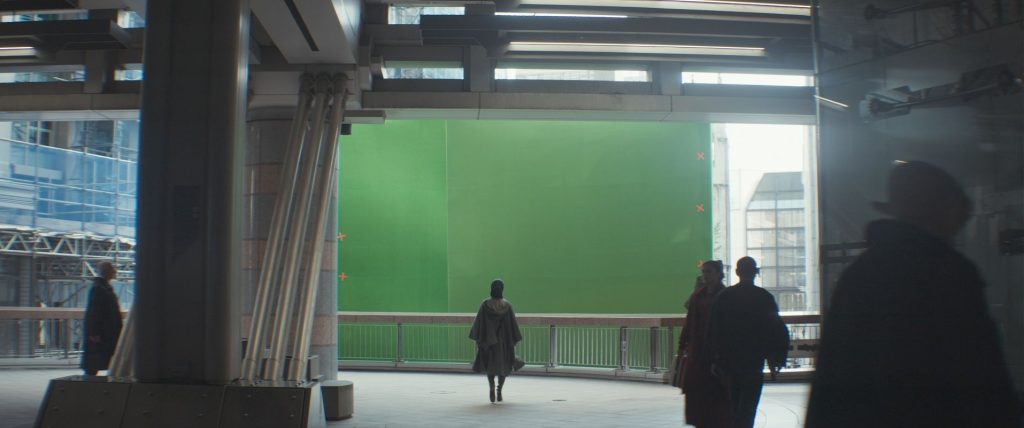
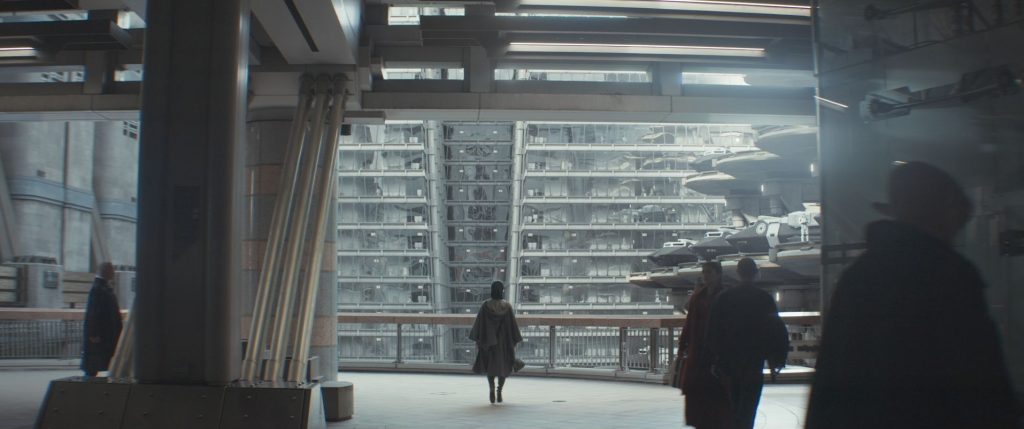
Within the ILM team, there are numerous creatives who have worked on Star Wars projects. Falls previously worked on Star Wars: The Force Awakens (2015), Rogue One: A Star Wars Story (2016), Solo: A Star Wars Story (2018), and Star Wars: The Rise of Skywalker (2019), while Leo worked on Star Wars: The Phantom Menace (1999) and Rogue One (as well as diving into immersive experiences with 2019’s Vader Immortal: A Star Wars VR Series) before arriving at Andor. That familiarity with the galaxy far, far away was a huge boon for the production and the consistency of its tone, as Leo explains.
“In a number of situations, we were the first stop in terms of Star Wars lore, where Tony would ask, ‘How do I do this kind of thing in Star Wars? How does that work in Star Wars?’ We’re able to help there. Same with Luke Hull. However, knowledge of our own world was equally as important for a show as grounded as Andor. For me, a big part of it was using things that were not just from Star Wars, but from other films, documentaries, and news clips.
“There’s a shot in episode three [‘Harvest,’ directed by Kleiman] where we see the troop transport on Mina-Rau and the TIE fighter appears low behind it,” Leo continues. “There’s a fly by as they’re all looking at it. Watching reference of Apache helicopters was one of our inspirations, and I found this incredible shot of a troop transport driving through the desert, and out of the dust cloud, came this helicopter, which goes right by them. I showed it to the director and I said, ‘Can we do this shot?’ And Ariel was like, ‘Oh yeah, absolutely. Let’s do it.’”
Sometimes, as in this case, previsualization from reference material is a huge part of the process, giving form to the action and allowing the production to have a rough version of the episode to build from.
“Tony and the director would quite often call on the visual effects team to pitch ideas for shots,” says Leo, “so Jennifer Kitching, our previs supervisor at The Third Floor, would dig around for reference and try things out. Even on big establishing shots, we were always trying to find something real, so [ILM visual effects supervisor] Scott Pritchard and I identified shots of Manhattan, Tokyo, and Hong Kong, very specific shots. Then we could determine the feel of the shots, but we’re ultimately doing it on Coruscant rather than New York or Hong Kong.”
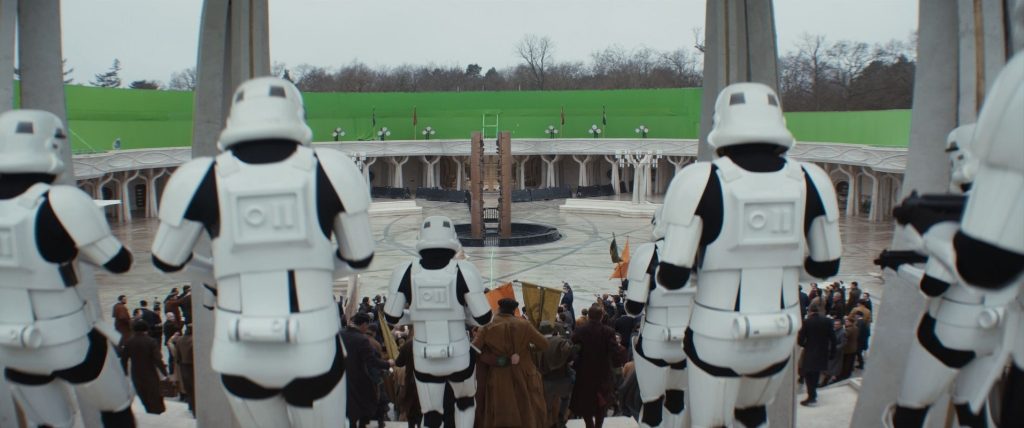
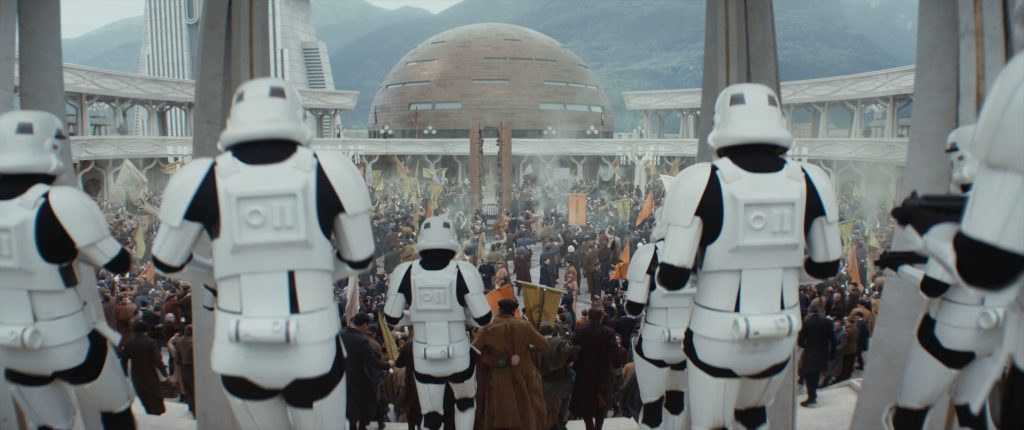
Famously, in the 1970s and 80s, ILM used traditional matte paintings to establish new locations, the principle of which is still at the core of creating an establishing shot. The technique, however, now resides in the digital realm, often with the aid of live-action background plates. Andor treats viewers to a number of establishing shots on Ghorman and Coruscant, a process that takes a considerable amount of time and effort, depending on the requirements of the shot.
“If you’re travelling through the digital location and have a bunch of different angles on it, we will build a full 360-degree environment,” explains Leo. “But if it’s for a single shot, we may do it as a bespoke shot. What worked really well on season one and into season two was that we based things on real cities. You can find open-source 3D street maps of Tokyo or New York, and we would basically fly around and find an angle and think, ‘Okay, that’s a cool angle; this feels organic. Now take that but replace all of the buildings with Coruscant buildings.’ You end up with something that feels organic and real.”
It’s an approach Leo picked up from the director of Rogue One.
“I have to give credit for having learned this approach to Gareth Edwards,” he explains. “When we built the city of Jedha, we had blocks of neighborhoods based on layouts from parts of Morocco. Then, Gareth asked us to do something which seemed really strange at the time. He said, ‘I want you to drop 300 random cameras into the CG model of the city, anywhere you like, and show me the pictures.’ We wrote a script that dropped a camera at every intersection and then rendered a view in every direction. We sent those to Gareth, and he picked from those, the idea being that rather than artificially building a view to the camera, you would scout the artificial city just as you would scout a real location and go, ‘I found this really cool angle here.’ That way, you ended up with compositions that felt much more interesting than if you simply asked someone to put some buildings in the background.”
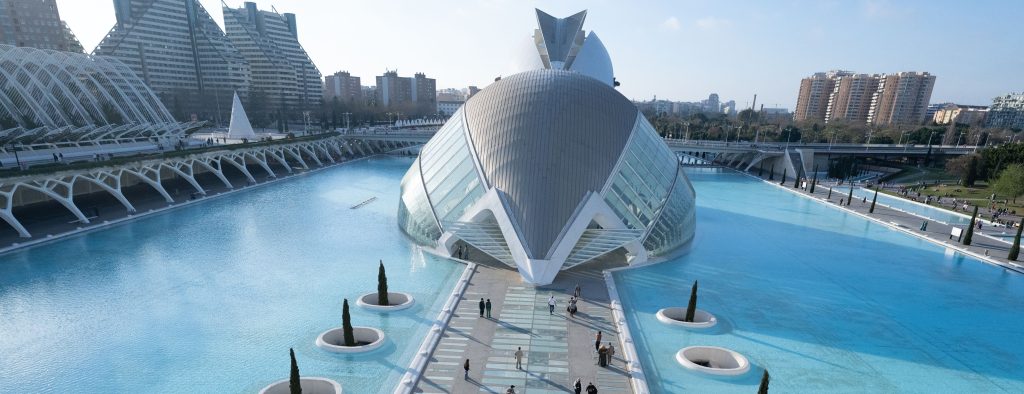
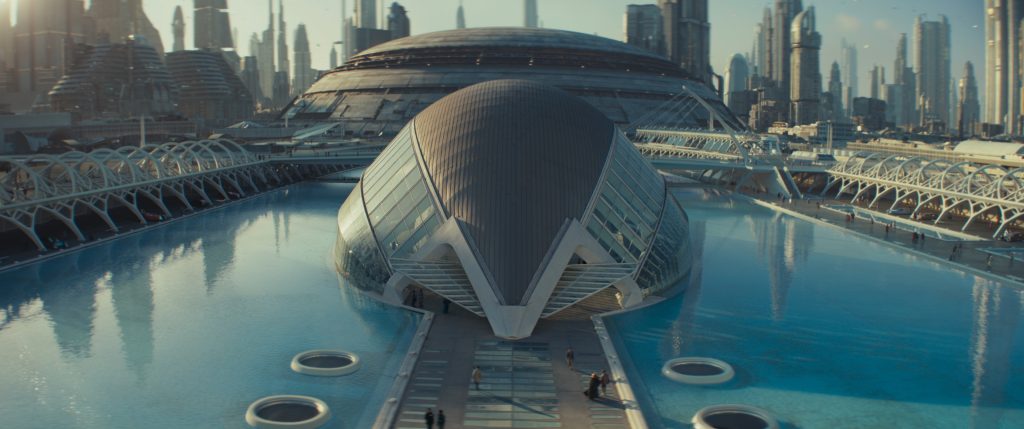
Coming from a visual effects background as Edwards does – as most recently evidenced by his work with ILM on 2025’s Jurassic World Rebirth – his fluency in the language of visual effects gave the crew a tremendous advantage on Rogue One.
“What I really appreciate about Gareth is that he has this really disciplined approach to thinking about whether you could have done a visual effects shot in the real world, and would it have felt the same way?” Leo continues. “I took that forward into our approach to Andor. Quite often, if we did a layout of visual effects and everything fit neatly into frame, Gareth would say, ‘That feels artificial. Make it so that something uncomfortably sticks out of frame, and as the shot progresses, I have to pan and tilt from one thing to the other, because both of them won’t fit in the frame at the same time.’ That makes it feel real and organic. I always appreciate how much I learned from Gareth about shot design.”
“That ethos fits really well with the aesthetic that Tony wanted for Andor,” adds Falls. “It was a constant conversation that we would have with our directors and DPs to make sure things weren’t too pretty. Mohen would often say, ‘It’s too clean, how do we make it look not as good, so that it looks even better?’ That was a lot of fun, and it really maintained that beautiful look from Rogue One as part of a storytelling thread that was done visually.”
With Andor now delighting viewers both old and new, the look and feel of the show has become one of its most celebrated talking points. Given that, could – or should – that aesthetic be carried over to the next Star Wars project or not? Mohen Leo has his own thoughts on that.
“Andor took inspiration from Rogue One, but Rogue One is primarily a war film, whereas Andor is a spy drama, so Luke Hull made the aesthetic even more grounded. What does this world look like from the perspective of an ordinary person who lives in it? I certainly hope that as we move forward, every project develops its own look. I wouldn’t want everything to look like Andor because that would be boring. The joy that I got out of working on this series is that it proves that you can make something that looks very different but still feels like it belongs in the same galaxy, so I hope that future projects will strike out in different directions and try different things.”
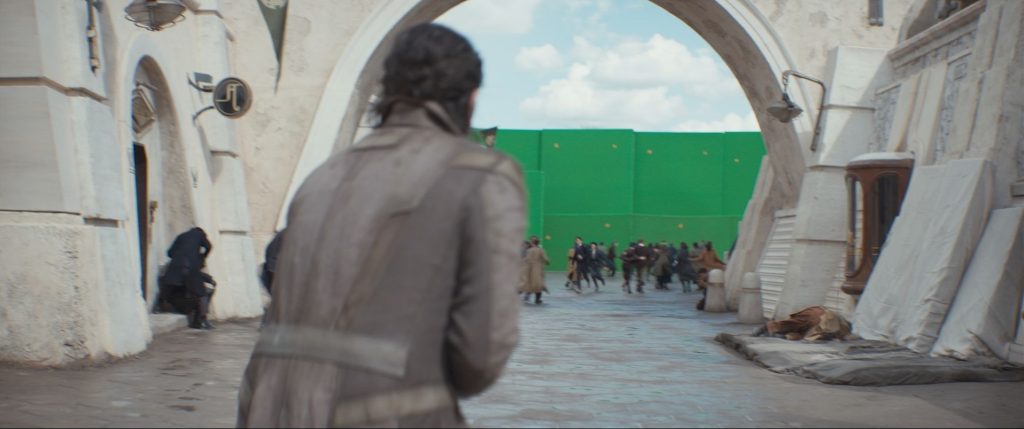
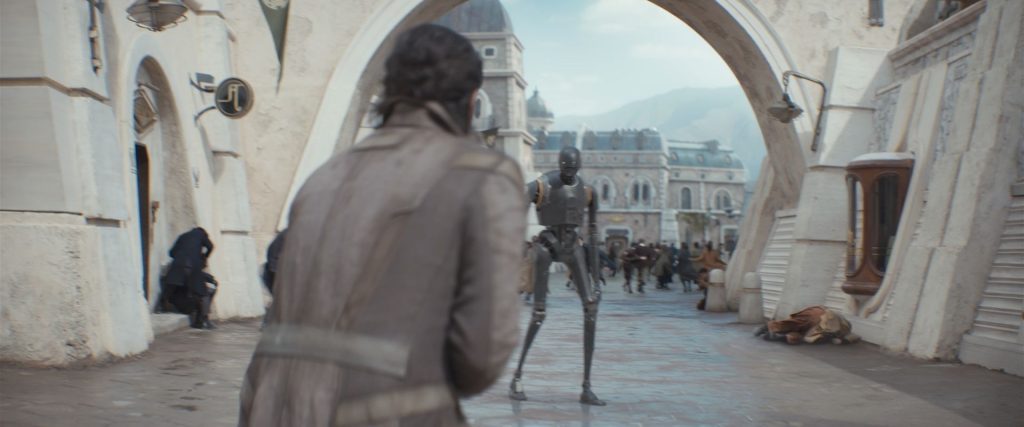
Understanding that each project needs and deserves its own visual identity within the broader Star Wars galaxy has changed the people who worked on Andor. As he moves on to new projects, TJ Falls reflects on one of the most important lessons he learned from the show.
“It was Tony and Sanne who said, ‘Let the experts be the experts.’ Because of that, every artist felt incredibly valued, and their contribution was fully appreciated. That message was constantly sent down from Tony: Let the best idea win. If an artist had something cool to contribute, it made its way up and it was credited and talked about.”
“The thing that I hope we can take forward is collaboration across departments,” says Leo. “Andor was completely generous in that everyone would happily let someone else do something if it made the result better, so there were no fiefdoms. We were able to put so much value on the screen because every problem was solved together, and that’s something that comes from the top down, in this case, from Tony.
“When there isn’t a sense of shared ownership and a clear creative direction, sometimes the frustration can trickle all the way down through the process,” Leo continues, “not just through the shoot and on the client side, but into the visual effects work and with the artists. Someone can change their mind at any minute and tell you to do something differently. For me, that was the most positive difference about Andor. It’s a culture that says there are no egos; it’s not about anyone standing out and making a name for themselves; it’s all about the collaboration. So I hope that’s something I encounter again on future projects.”
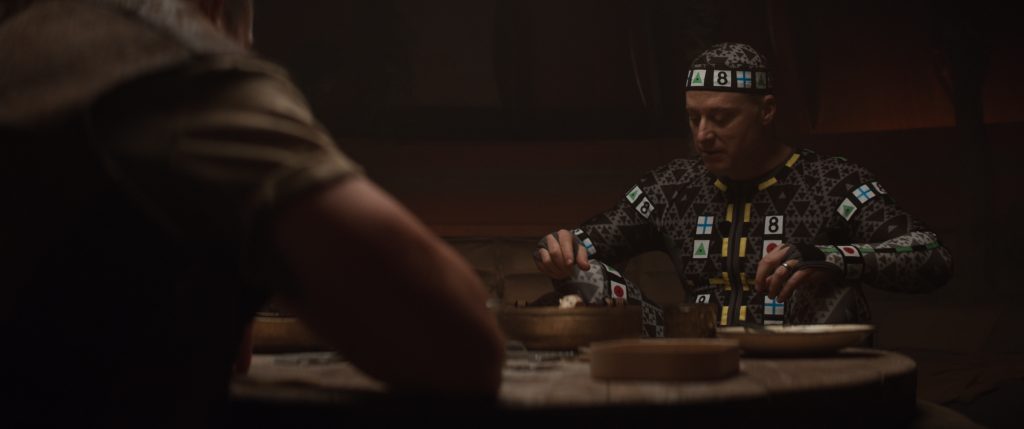
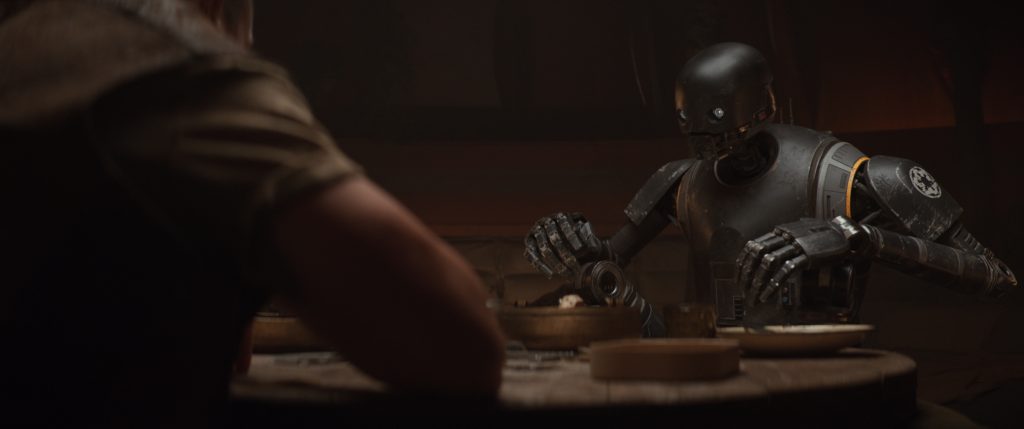
When pondering each of their favorite moments in season two, Leo is quick to answer, “Cassian stealing the TIE Avenger and escaping in episode one [‘One Year Later,’ directed by Ariel Kleiman] was certainly the one I was involved in the longest, all the way from the beginning pitching storyboards for the action, right down to it being the last thing we shot with Diego.
“What I like about it is that on the one hand it’s a very classic Star Wars sequence with the spaceship and a dogfight,” Leo continues, “but we found a way to still make it fit within Andor by designing it in a way that it starts very practical in a real hangar with a real ship and stunts, and bit by bit we transition into something that’s pure computer graphics, but it all fit into the style the show, so I’m really pleased with that.”
Falls is equally quick to respond. “My favorite is the opening shot from episode eight [‘Who Are You?’ directed by Janus Metz], which is a long lens establishing shot of Ghorman, orbiting around the city. We had Hybride [Ubisoft’s visual effects branch] working on the look of the plaza, and ILM took on the high establishing shots of Ghorman from the air. The shot went through a number of rounds of honing it into what Mohen was thinking, pitching the idea without the visual was tricky, trying to get everyone to understand what it was that was being described. Once we started to get the visuals into motion with previs, it started to click with everybody. Then it came alive in shot production. I think it’s absolutely gorgeous.”
—
Mark Newbold has contributed to Star Wars Insider magazine since 2006, is a 4-time Star Wars Celebration stage host, avid podcaster, and the Editor-in-Chief of FanthaTracks.com. Online since 1996. You can find this Hoopy frood online @Prefect_Timing.
Read part one of our conversation with TJ Falls and Mohen Leo about Andor on ILM.com.